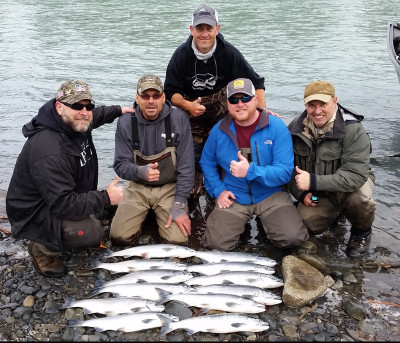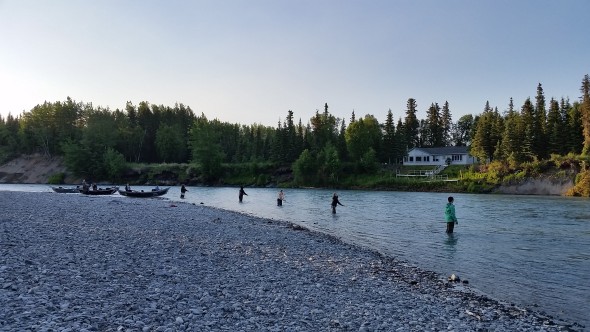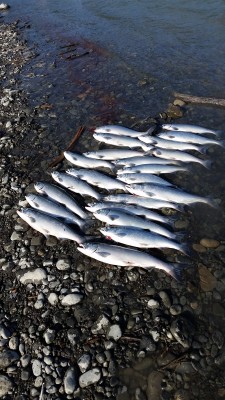
15 Feb Alaskan Sockeye Salmon 101
Alaskan Sockeye salmon have always had their annual place in our seasonal salmon season, but recent king salmon woes have changed the amount of time we spend targeting these intriguing fish. In recent years, we have started regularly fishing for Alaskan wild sockeye salmon on the Kasilof River which sees a great push of fish in early June and this run just keeps building well into July when we have turned our attention to the Kenai. One thing I really enjoy about Alaska Fishing on the Kasilof is the addition of the drift boat and the scenic float involved. I also like the feeling of the Kasilof in the early season as it transforms itself before your very eyes. It starts off in early June as a very descript and easy flowing glacial river and by the end of July it looks like a fire hydrant at full bore. This transformation is something you can track on a daily basis as you watch the bank you were standing on the day before, become the traveling lane you hook fish in a few days later.

Alaskan Wild Sockeye Salmon
Swinging for Alaskan sockeye salmon takes practice and it takes patience but more than anything it takes fish. Sockeye salmon return to the river in pulses and they tend to stay together for the most part as they make their way upriver. With a tide book and successive days on the water, one can begin to predict with reasonable accuracy where the bulk of the fish will be at a certain time and place. Once you find the fish, and get into position, your technique becomes paramount. If you have never fished for sockeye before, the technique is definitely going to be different than most fishing you are used to. The biggest difference is sockeye salmon, for the most part, just do not bite. There are times and places where they will occasionally strike a lure but overall as a species they are not wired to chase and kill things. They spend their juvenile lives feeding on krill and plankton and therefore depend on food that is not trying to get away from them. All this means catching them in the mouth takes a certain degree of ingenuity. One saving grace with sockeye is their migration pattern. As they travel up the river they almost always seek out the near shore waters or the path of least resistance and this means you must access them from shore. With a long leader, a sharp hook and the right amount of weight, a skilled sockeye angler just needs fish to complete the equation. With the proper technique one can easily put your hook right in the corner of the sockeye’s jaw, even without the fish actually biting the hook. Seem fishy? It’s not and it works really well. It just takes good numbers of fish and the right traveling lane or gravel bar and success is high.
Fortunately our Alaskan sockeye returns on the Kenai and the neighboring Kasilof number in the hundreds of thousands so thousands of fish are traveling upriver daily for weeks at a time. This means we have an Alaskan wild sockeye salmon season that lasts from mid-June all the way until mid-August! That’s an amazing resource and we have explored its bounty more in recent seasons with king salmon runs being down. Through it all we have made some great discoveries and have developed several new and very popular fishing adventures. If you have never fished for Alaskan sockeye salmon before, you owe it to yourself to see why they are one of the most popular and fascinating salmon in all of Alaska. Learn more about our guided Alaska fishing trips today.

